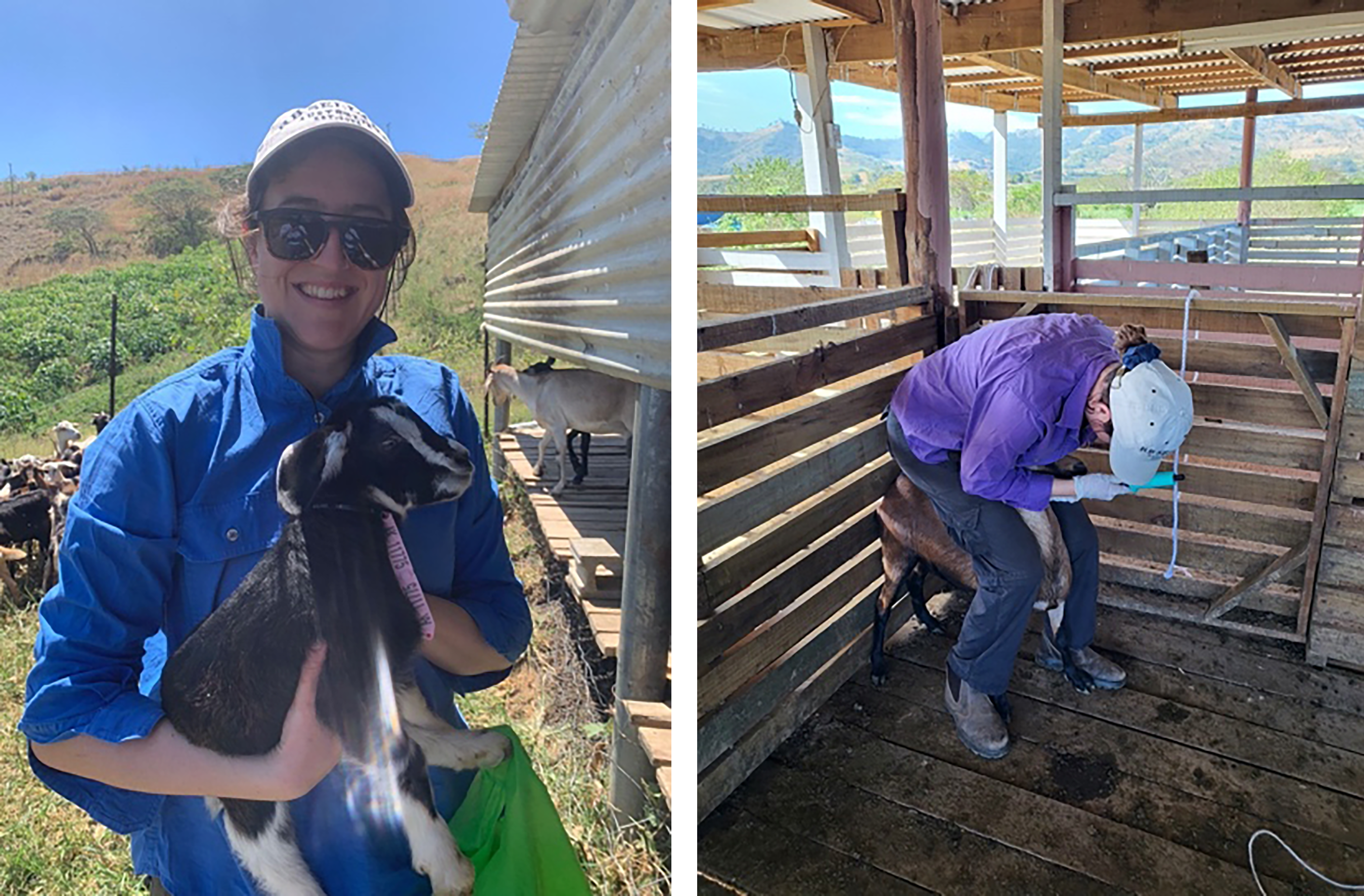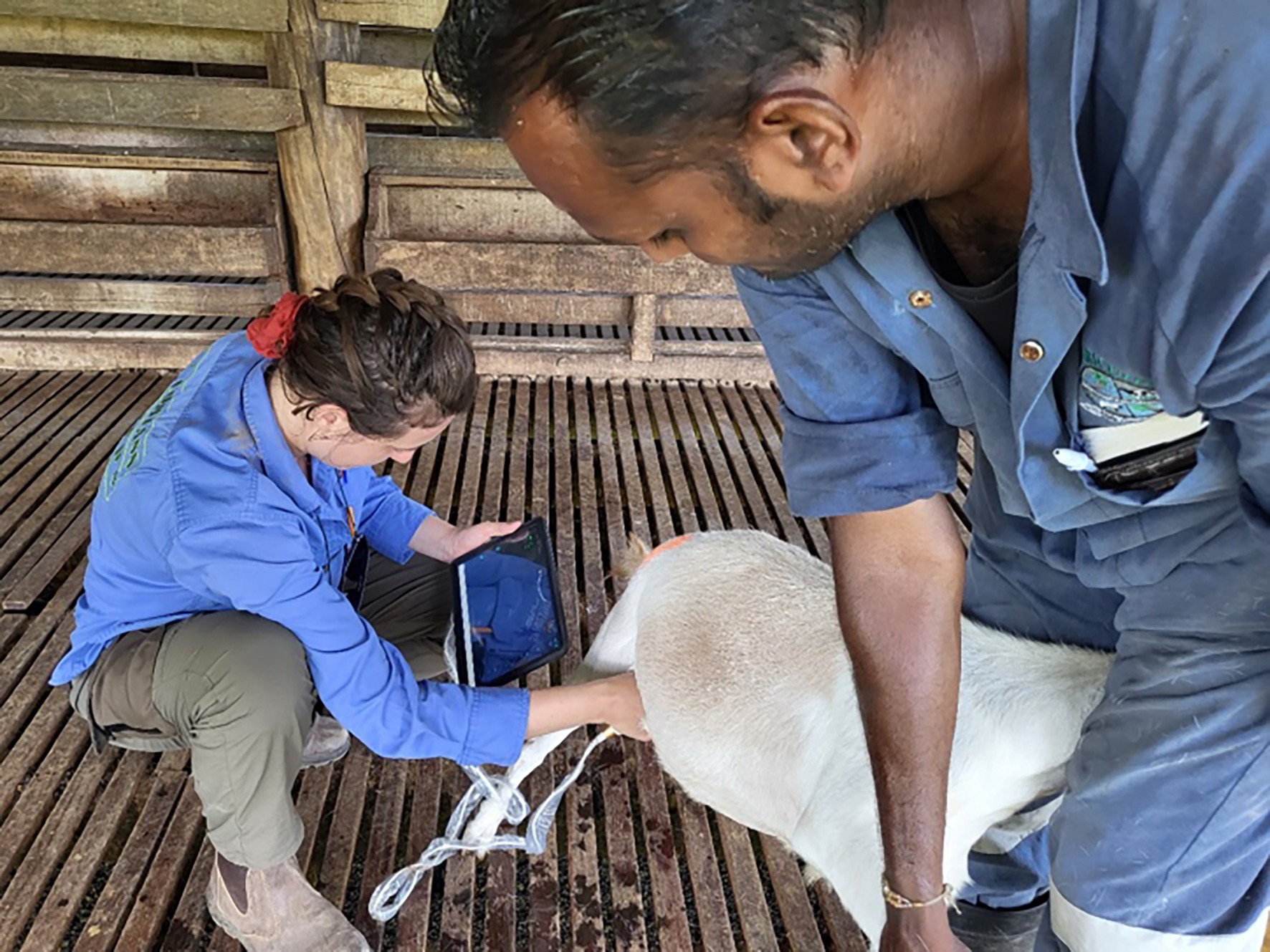

Improving animal production in Fiji
January 4, 2024
One way the Crawford Fund supports and encourages the next generation of Australians in study, careers and volunteering in international agricultural research is through our highly sought after Student Awards, funded by our State and Territory Committees and made possible by organisations including ACIAR, international centres, Australian and overseas universities and NGOs.
Please note applications for our 2024 Student Awards are now open!

In 2021, we announced 10 tertiary students had won awards to gain international agricultural research experience and expertise. The global pandemic caused considerable delays for this cohort, with some opting for ‘wraparound’ strategies to ensure the work was carried out without the planned travel, while others have since successfully travelled.
We would like to share the experience of Amy Bates, a PhD Student from Charles Sturt University. Initially, Amy’s Student Award project research, focused on small ruminants in Fiji, was to assist in the collection and analysis of data relating to condition score and liveweight (if collected) and pregnancy outcomes, and the relationship between these factors. However, travel delays because of COVID-19, meant that she had to turn her efforts to pregnancy scanning, also a component of her PhD work. She assisted with data collection and trial pregnancy scanning on small holder farms in Fiji and establishing an appropriate pregnancy scanning regime for the project. We really enjoyed Amy contributing to our Insta Campaign providing us with photos when she was over there!
The project is related to ACIAR work (LS/2017/033), improving small ruminant production and supply in Fiji and Samoa. In Fiji, Amy worked with the Pasifika Sheep and Goat Improvement Project.
Small ruminants are an important part of both the day-to-day and ceremonial requirements of Fijian culture. Currently, demand for small ruminants is not being met by the local production and meat is imported to meet demand. Lower quality cuts are often imported due to cost, and the imported meat poses a health risk as it usually has a high fat content.
“Due to the importance of small ruminants to Fijian culture, the Fijian governments is wanting to assist small ruminant producers to improve their production to better meet the demand for small ruminant meat and ensure better quality, leaner cuts of meat are available,” said Amy.
Improving the management of small ruminants has the potential to increase production, which is beneficial to both producers through greater production output, and consumers through greater availability of better quality, leaner meat. Non-communicable diseases, such as diabetes and heart disease, are high and of concern for the Fijian government.
Further, ensuring the nutritional needs of small ruminants are met has the potential to improve both conception rates and the number progeny born and weaned.
“Broadly, my PhD research is exploring the condition and liveweight of ewes at mating and how this impacts reproductive potential. This is being explored across breeds and mating seasons. An economic analysis is also being performed to explore the differences between breeds, mating seasons and location. Further, producers are also being surveyed to better understand their management practices and reasons for performing these practices,” explained Amy.
The Crawford Fund Student Award allowed Amy to travel to Fiji and stay for four weeks to experience agricultural research in the context of a developing country. The main objectives of Amy’s placement were to assist in data collection for the wider project and to determine how a pregnancy scanning regime might fit within the project.

The identification of pregnant and non-pregnant ewes by pregnancy ultrasound scanning allows producers to manage a ewe flock based on the nutritional requirements of the ewes – those with more foetuses having greater nutritional needs compared to those with one or no foetus. This means resources are not misused or wasted, which has economic benefits alongside improved production.
“Prior to visiting Fiji, I spent time with a commercial pregnancy scanner in southern NSW to learn how to identify pregnant and non-pregnant ewes. The equipment used, however, is very different and as such, trialling with the exact equipment was essential. At the time of my visit, many dams were either giving birth, or were heavily pregnant. However, using the project ultrasound device, I attempted to pregnant scan dams,” said Amy.
Amy identified several difficulties with the process, including:
- the ultrasound equipment is very different between brands and models, so using the project scanner took some getting used to.
- the animals had much greater hair cover in Fiji compared to Australia and as such, had to be shaved to get a good sound image.
- there is a window in which pregnancy scanning can successfully and reliably be performed, around 70-100 days post conception. The heavily pregnant nature of the dams made foetal detection very difficult. A foetal heartbeat was often detectable, but at this point, pregnancy may be physically observable.
“The use ultrasound pregnancy detection was discussed at length regarding the relevance to the project. Until more dam data is collected within the project, it is unknown when the best time to use ultrasound scanning is, and if it will be a useful practice. Once data has been collected across the year (for an entire 12-month period), the practicality of a pregnancy scanning regime will be able to be determined,” said Amy.
While in Fiji, Amy also:
- helped with drenching as a component of the parasite management of the project
- observed and assisted with the Gender Equality and Social Inclusion (GESI) component of the project performed where discussions were held with female producers to better understand the role of female producers in Fiji.
- assisted sample collection for a foot rot project at a government sheep farm with a visiting foot rot specialist from Australia. The level of foot rot across Fiji is unknown, however lameness is a known issue, especially during the wetter months and it is predicted to by a chronic unmanaged issue.
“From a wider perspective, the greatest learning from my work in Fiji was that a lot can be achieved with very little. With very few resources, data can be collected and used to make inference and analysis. This understanding will serve me well as I progress with my research career. Further, understanding how communication, even if in the same language, is nuanced. This was an interesting aspect of working in Fiji. Exposure to this has given me the space to consider how I communicate, and how it may be improved,” she said.
“Witnessing the production of sheep in a different climate, country, culture and with limiting resources was beneficial. Differences and commonalities to the sheep production I have been exposed to in Australia were apparent, the most obvious difference being resources and commonality the care producers have for their flocks. For the project, as more data becomes available, the information I was able to share around use and timing of pregnancy scanning will become apparent and applicable,” said Amy.
“Exposure to developing agriculture research and extension has stoked the fire to continue on a journey in the developing agriculture space,” she concluded.




